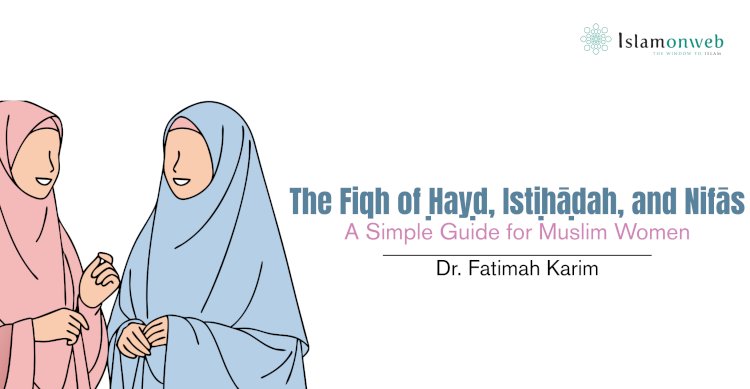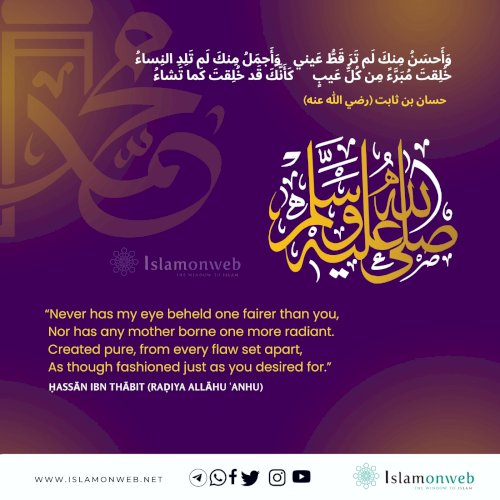The Fiqh of Ḥayḍ, Istiḥāḍah, and Nifās: A Simple Guide for Muslim Women
Among the most important discussions in Islamic jurisprudence related to women are the rulings of ḥayḍ (menstruation), istiḥāḍah (irregular or non-menstrual bleeding), and nifās (post-natal bleeding). These natural occurrences are part of women’s lives, yet they have significant implications on worship such as ṣalāh (prayer), ṣawm (fasting), ṭahārah (purification), and even marital relations. The jurists (fuqahāʾ) have written extensively on these subjects, as they combine aspects of ritual law (ʿibādāt) and personal matters (muʿāmalāt). Correct understanding of these rulings is essential for Muslim women in order to fulfill their obligations in accordance with Sharīʿah while appreciating the mercy and wisdom of Allah in granting concessions (rukhaṣ).
Definition and Nature of Ḥayḍ
Linguistically, ḥayḍ refers to “flowing” or “shedding”, while technically, it is defined as the natural blood that exits from the womb of a woman at specific times without being caused by illness or childbirth. The majority of scholars agreed that the minimum age for menstruation is nine lunar years, based on the common experience of women. The duration of ḥayḍ differs according to madhāhib: the Ḥanafīs hold that the minimum is three days and the maximum is ten days; the Mālikīs view the minimum as a single instance and the maximum as fifteen days; the Shāfiʿīs and Ḥanbalīs generally also set the maximum at fifteen days, though the minimum is one day and night.¹
The jurists stressed that any bleeding beyond the maximum period is not considered menstruation but istiḥāḍah. This distinction is vital because the legal consequences of menstruation are different from other forms of bleeding.
Legal Rulings Related to Ḥayḍ
The woman in menstruation is exempted from performing ṣalāh. Unlike fasting, which she is required to make up (qaḍāʾ), prayers missed during menstruation are not made up, as reported in the ḥadīth of ʿĀʾishah when she was asked why menstruating women did not make up prayers while they made up fasting, and she replied: “That used to happen to us, and we were commanded to make up the fast but not the prayer.”²
In addition, a menstruating woman is prohibited from entering the mosque, from reciting the Qurʾān (according to the majority of jurists, though Mālikīs allowed it without touching the muṣḥaf), and from performing ṭawāf around the Kaʿbah. Marital relations, specifically intercourse, are also prohibited during menstruation, as explicitly mentioned in the Qurʾān: “They ask you about menstruation. Say: it is a harm, so keep away from women during menstruation and do not approach them until they are pure.” (al-Baqarah, 2:222).
The ending of menstruation is determined by the cessation of bleeding accompanied by the appearance of the whitish discharge (al-quṣṣah al-bayḍāʾ) or complete dryness. Once purity is established, the woman must perform ghusl before resuming ṣalāh or other acts of worship requiring ṭahārah.³
Istiḥāḍah (Irregular Bleeding)
Istiḥāḍah is abnormal bleeding outside the natural cycle of menstruation or post-natal bleeding. The Prophet ﷺ clarified its distinction in the ḥadīth of Fāṭimah bint Abī Ḥubaysh, who suffered prolonged bleeding and was told: “This is not menstruation, but it is bleeding from a vein. So, when your menstruation comes, then leave the prayer, and when it ends, wash the blood from yourself and pray.”⁴
Jurists explained that istiḥāḍah does not prevent ṣalāh, fasting, or recitation of Qurʾān. However, the woman must ensure cleanliness by washing away the blood, using sanitary materials, and renewing wuḍūʾ for each prayer time according to the majority. The rulings here demonstrate the Sharīʿah’s balance between preserving ritual purity and recognizing physical realities.
Nifās (Post-Natal Bleeding)
Nifās refers to bleeding that occurs following childbirth. The fuqahāʾ have discussed its minimum, maximum, and usual duration in detail. According to Ibn Ḥajar al-Haytamī in Tuḥfah al-Muḥtāj, there is no fixed minimum duration for nifās; it can be as short as a moment, even a single drop of blood, and still legally classified as nifās. The maximum duration is sixty days, while the usual duration observed through women’s experience (istiqrāʾ) is forty days.⁵
This position is also affirmed by contemporary fatwa institutions such as the Mufti Wilayah Persekutuan, who stated that if bleeding continues beyond sixty days without pause, it is classified as istiḥāḍah. However, if the blood ceases—even for a short time—then any new bleeding after a period of purity may be regarded as ḥayḍ, depending on the woman’s cycle.⁶
Like menstruation, nifās carries the same rulings: exemption from ṣalāh, obligation to make up fasting, prohibition from intercourse, and prohibition from ṭawāf.
Wisdom and Juristic Reflections
Classical jurists like Ibn Qudāmah emphasized that the rulings concerning ḥayḍ, nifās, and istiḥāḍah are rooted in both revealed texts (Qurʾān and Sunnah) and juristic reasoning derived from observation of women’s natural conditions. He clarified that these rulings were not arbitrary restrictions but rather reflect the Sharīʿah’s wisdom in balancing ritual obligations with physiological realities.⁷ Contemporary works such as al-Mufaṣṣal fī Aḥkām al-Marʾah highlight that Sharīʿah’s approach reflects mercy (raḥmah), removing hardship (rafʿ al-ḥaraj), and affirming the dignity of women by acknowledging their natural conditions.⁸
The distinctions between ḥayḍ, istiḥāḍah, and nifās not only clarify legal responsibilities but also provide insight into the flexibility of Islamic law. They exemplify how the jurists combined Qurʾānic guidance, Prophetic practice, and empirical realities of women’s experiences in crafting rulings that remain relevant across centuries.
Conclusion
The subjects of ḥayḍ, istiḥāḍah, and nifās are central to women’s jurisprudence and reflect the unique care of Islamic law towards natural conditions of women. Correct knowledge in these areas helps Muslim women navigate their worship with confidence and removes unnecessary doubts. The jurists’ elaboration—both classical and contemporary—shows how Sharīʿah combines precision in rulings with compassion in application. Ultimately, these laws are not merely restrictions, but expressions of Allah’s mercy, recognizing the realities of human creation while facilitating devotion and spirituality.
About the author:
Dr. Fatimah binti Karim is an Assistant Professor of Department Fiqh and Usul al-Fiqh, at the International Islamic University Malaysia (IIUM), Kuala Lumpur.
References
- Ibn Qudāmah, al-Mughnī, 2nd ed. (Beirut: Dār al-Fikr, 1985), vol. 1, pp. 193–195.
- Muslim ibn al-Ḥajjāj, Ṣaḥīḥ Muslim, (Riyadh: Dārussalām, 2000), vol. 1, p. 265, ḥadīth no. 335.
- al-Nawawī, al-Majmūʿ Sharḥ al-Muhadhdhab, (Beirut: Dār al-Fikr, 1997), vol. 2, pp. 562–564.
- al-Bukhārī, Muḥammad ibn Ismāʿīl, Ṣaḥīḥ al-Bukhārī, (Cairo: al-Maṭbaʿah al-Salafiyyah, 1987), vol. 1, p. 84, ḥadīth no. 306.
- Ibn Ḥajar al-Haytamī, Tuḥfah al-Muḥtāj, (Beirut: Dār Iḥyāʾ al-Turāth al-ʿArabī, n.d.), vol. 1, p. 413.
- Pejabat Mufti Wilayah Persekutuan, al-Kafi li al-Fatāwā #1815, “The ruling of nifās blood which discharges more than 60 days,” available at: muftiwp.gov.my.
- Ibn Qudāmah, al-Mughnī, vol. 1, pp. 200–205.
- ʿAbd al-Karīm Zaydān, al-Mufaṣṣal fī Aḥkām al-Marʾah wa al-Bayt al-Muslim fī al-Sharīʿah al-Islāmiyyah, (Beirut: Muʾassasat al-Risālah, 1993), vol. 1, pp. 279–285.
Disclaimer
The views expressed in this article are the author’s own and do not necessarily mirror Islamonweb’s editorial stance.
























Leave A Comment